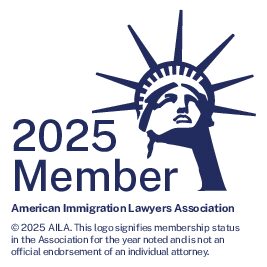The Wall Street Journal publishes an excerpt from a forthcoming book by former Florida Governor Jeb Bush and co-author Clint Bolick, a constitutional lawyer, entitled ‘Immigration Wars: Forging an American Solution.’ The article is titled ‘Solving the Immigration Puzzle.’ Immigration is not static, nor can it be ‘solved’ in a temporal sense. It should have been titled ‘Designing a Better Maze.’ My reply in the WSJ readers forum:
~ Agree, nothing ground-breaking here, limited prescriptive value to this article. I disagree with Gov. Bush’s assertion that we need to “start from scratch.” Much of the non-immigrant visa system works at it is largely designed to, classifying and controlling channels of temporary foreign visitors to the U.S., then providing avenues for meritorious promotion vis-a-vis a system of advancement to permanent residence through targeted employment or investment. Family-based adjustment of status to residence based on qualifying immediate relative relationships – the old marriage certificate shortcut – in principle, can’t change much either fundamentally.
There is, however, merit to the idea that the family chain needn’t be so constant. For instance, those who may qualify for some form of future ‘amnesty,’ if originally EWI (entry without inspection) or a long-term visa overstay, should be denied if not citizenship, than at least the ability to become a pulling link in the chain, i.e., to sponsor another family member to immigrate. And denied that right if not forever, then at least for a very long time, as the price one pays – and will continue to pay – for breaking the law as a first act in America.
As well, our system of unlawful immigration cannot fundamentally change. The primary grounds for inadmissibility – criminal, health, security, etc. – must remain. All applicants for permanent residence or citizenship must demonstrate an ongoing commitment to responsible citizenry and moral character, as is currently the law. We must streamline to the greatest extent possible the tribunal process for detaining and removing undeserving or law breaking illegal immigrants, while at the same time providing due process of law and the opportunity to be heard for those detained within the borders. Narrowly defined but clear and prompt pathways to immigrate or obtain temporary harbor from dangers abroad for true asylees and refugees must continue to exist under the law.
The areas most ripe for legislative action are at this stage in the debate well known: increased employment-based avenues, matched as best as possible with skilled labor demand but also stricter enforcement of market pay anomalies and illegal hiring; increased and diversified investment and entrepreneurship visas and pathways to residence; increased channels and wider opportunities for college and graduate students, researchers and scientists; more humane opportunities for the hundreds-of thousands of children literally dragged (in some cases carried) across the border by a single parent or coyotes; and yes, a pathway to a legal resident status, even if in stages, for current EWIs and overstays, requiring either firm employment or family sponsorship, or a very clean record and (in many cases) one inconvenient trip back to the home country. Cry me a river, people.
And au contraire, Lady Liberty would say, there is a line. To the extent we retain maximum annual levels of immigration, those in the country illegally that gain a future shot at immigrating must take a number at the end of the line in whichever qualifying category they belong. To provide shortcuts to permanent residence that would allow leapfrogging over well-meaning immigrants who have suffered the inefficiencies of the law to date would be antithetical to both the spirit and the rule of law in the land of the free. It will be impossible to scrap the annual quota system as a frame for the mechanics. Simply waiting your turn will remain a necessary component.
The maze of both time and merit-based immigration options can be expanded and refined to let greater amounts of more-deserving mice in – pardon the expression – and to keep wayward mice out, but there still must exist logically designed, socially engineered (in a pragmatic sense) and at times blocked gateways to the cheese. Get on with it, Washington. You’re not starting from scratch. It’s not that large of a legislative universe. Quit asking your aides to research it. Study and understand the system yourselves. Stop panning for base votes with unproductive partisan dicta. Develop and coalesce around a revamped design. Bump the numbers up and redesign the channels, integrating modern technologies.
U.S. immigration doesn’t have to be perfect or correct, nor can it be solved. But it is the pride and legacy of our great nation, and it’s well past time that it be better.




Not a Puzzle, a Maze: A Reply to Jeb Bush and Clint Bolick
The Wall Street Journal publishes an excerpt from a forthcoming book by former Florida Governor Jeb Bush and co-author Clint Bolick, a constitutional lawyer, entitled ‘Immigration Wars: Forging an American Solution.’ The article is titled ‘Solving the Immigration Puzzle.’ Immigration is not static, nor can it be ‘solved’ in a temporal sense. It should have been titled ‘Designing a Better Maze.’ My reply in the WSJ readers forum:
~ Agree, nothing ground-breaking here, limited prescriptive value to this article. I disagree with Gov. Bush’s assertion that we need to “start from scratch.” Much of the non-immigrant visa system works at it is largely designed to, classifying and controlling channels of temporary foreign visitors to the U.S., then providing avenues for meritorious promotion vis-a-vis a system of advancement to permanent residence through targeted employment or investment. Family-based adjustment of status to residence based on qualifying immediate relative relationships – the old marriage certificate shortcut – in principle, can’t change much either fundamentally.
There is, however, merit to the idea that the family chain needn’t be so constant. For instance, those who may qualify for some form of future ‘amnesty,’ if originally EWI (entry without inspection) or a long-term visa overstay, should be denied if not citizenship, than at least the ability to become a pulling link in the chain, i.e., to sponsor another family member to immigrate. And denied that right if not forever, then at least for a very long time, as the price one pays – and will continue to pay – for breaking the law as a first act in America.
As well, our system of unlawful immigration cannot fundamentally change. The primary grounds for inadmissibility – criminal, health, security, etc. – must remain. All applicants for permanent residence or citizenship must demonstrate an ongoing commitment to responsible citizenry and moral character, as is currently the law. We must streamline to the greatest extent possible the tribunal process for detaining and removing undeserving or law breaking illegal immigrants, while at the same time providing due process of law and the opportunity to be heard for those detained within the borders. Narrowly defined but clear and prompt pathways to immigrate or obtain temporary harbor from dangers abroad for true asylees and refugees must continue to exist under the law.
The areas most ripe for legislative action are at this stage in the debate well known: increased employment-based avenues, matched as best as possible with skilled labor demand but also stricter enforcement of market pay anomalies and illegal hiring; increased and diversified investment and entrepreneurship visas and pathways to residence; increased channels and wider opportunities for college and graduate students, researchers and scientists; more humane opportunities for the hundreds-of thousands of children literally dragged (in some cases carried) across the border by a single parent or coyotes; and yes, a pathway to a legal resident status, even if in stages, for current EWIs and overstays, requiring either firm employment or family sponsorship, or a very clean record and (in many cases) one inconvenient trip back to the home country. Cry me a river, people.
And au contraire, Lady Liberty would say, there is a line. To the extent we retain maximum annual levels of immigration, those in the country illegally that gain a future shot at immigrating must take a number at the end of the line in whichever qualifying category they belong. To provide shortcuts to permanent residence that would allow leapfrogging over well-meaning immigrants who have suffered the inefficiencies of the law to date would be antithetical to both the spirit and the rule of law in the land of the free. It will be impossible to scrap the annual quota system as a frame for the mechanics. Simply waiting your turn will remain a necessary component.
The maze of both time and merit-based immigration options can be expanded and refined to let greater amounts of more-deserving mice in – pardon the expression – and to keep wayward mice out, but there still must exist logically designed, socially engineered (in a pragmatic sense) and at times blocked gateways to the cheese. Get on with it, Washington. You’re not starting from scratch. It’s not that large of a legislative universe. Quit asking your aides to research it. Study and understand the system yourselves. Stop panning for base votes with unproductive partisan dicta. Develop and coalesce around a revamped design. Bump the numbers up and redesign the channels, integrating modern technologies.
U.S. immigration doesn’t have to be perfect or correct, nor can it be solved. But it is the pride and legacy of our great nation, and it’s well past time that it be better.